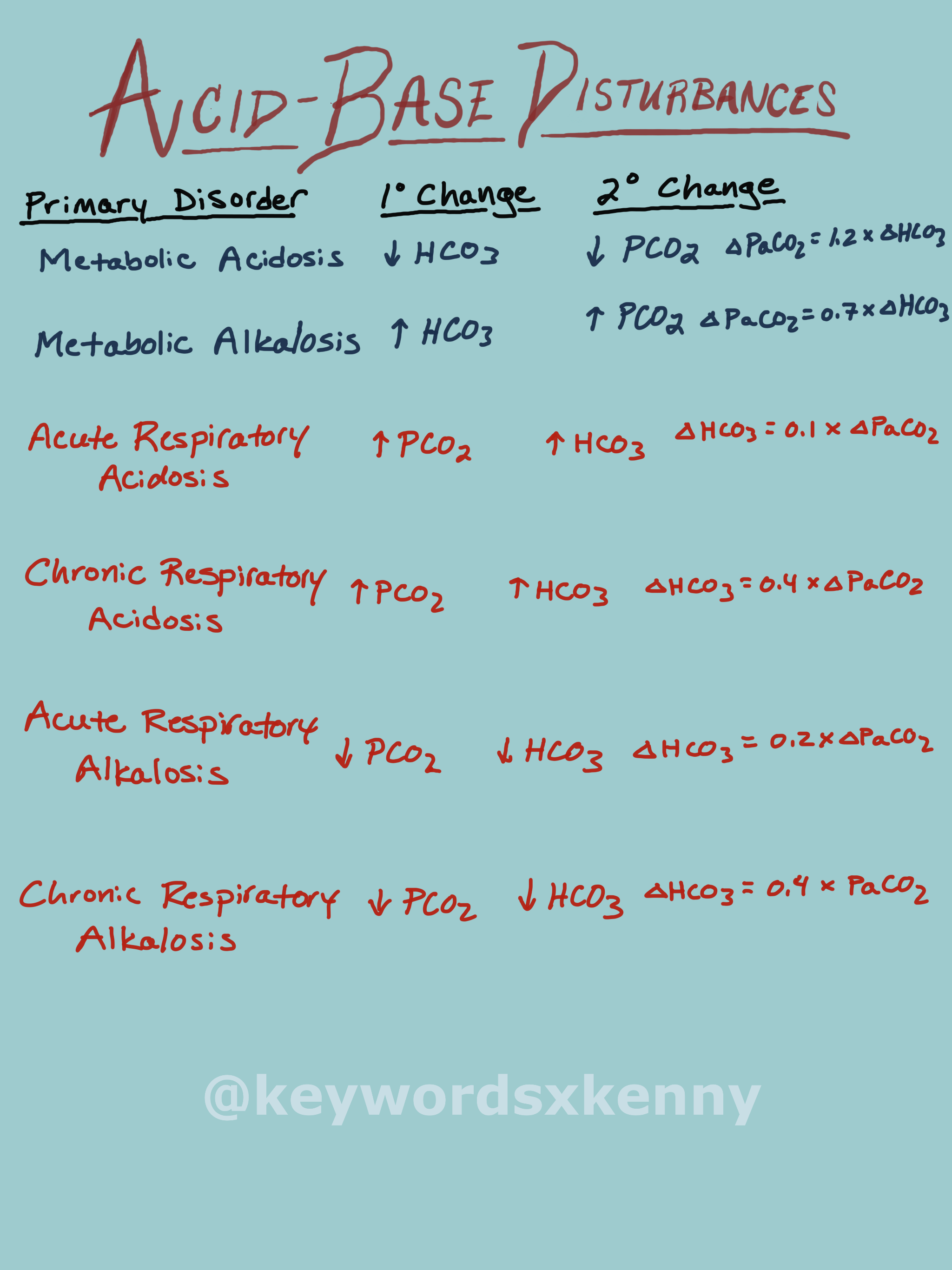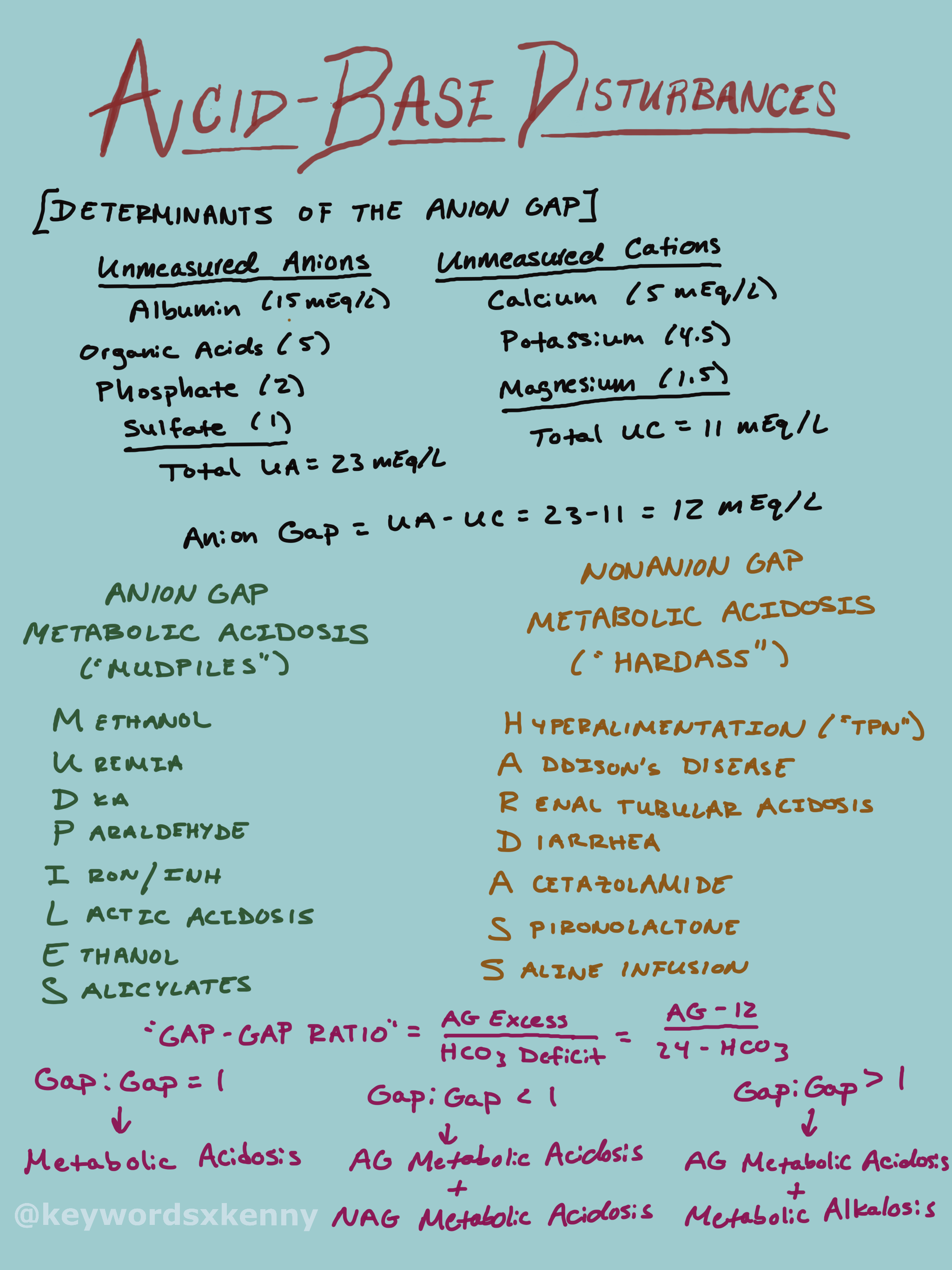Acid-Base Disorder
This will be a review of normal arterial blood gas values, a stepwise method to identifying acid-base disorders, and common causes of metabolic acidosis.
A normal pH is between 7.36 and 7.44. A normal PaCO2 is 36 to 44 mmHg. And a normal concentration of HCO3 is 22 to 26 mEq/L.
When analyzing acid-base disorders, you can use a stepwise method to identify primary, secondary, and mixed acid-base disorders using the relationships between the concentration of hydrogen, bicarbonate, and PaCO2.
Step 1 is identifying the primary acid-base disorder. If the PaCO2 and/or the pH is outside the normal range, there is an acid-base disorder present. If the PaCO2 and pH are both abnormal, compare the directional change. If they change in the same direction, there is a primary metabolic disorder. If they change in the opposite direction, there is a primary respiratory disorder. If only the pH or the PaCO2 is abnormal, the condition is a mixed metabolic and respiratory disorder (ie. equal and opposite directions).
Step 2 is evaluating the secondary response. For a primary metabolic disorder, if the measured PaCO2 is higher than expected, there is a secondary respiratory acidosis and vice-versa. For a primary respiratory disorder, a normal or near-normal HCO3 indicates that the disorder is acute. When the HCO3 is abnormal, it can be expected that the respiratory acidosis is chronic in nature.
Step 3 is using the “gaps” to evaluate a metabolic acidosis. The anion gap is a rough estimate of the relative abundance of unmeasured anions and cations.
Causes of anion-gap metabolic acidosis can be remembered by the mnemonic “MUDPILES”. Causes of non-anion gap metabolic acidosis can be remembered by the mnemonic “HARDASS”.
The Gap-Gap Ration is the ratio between anion gap excess and bicarbonate deficit. If the ratio equals 1, there is only an anion gap metabolic acidosis present. If the ratio is less than 1, there is likely an anion gap metabolic acidosis mixed with a non-anion gap metabolic acidosis. If the ratio is greater than 1, there is likely an anion-gap metabolic acidosis mixed with a metabolic alkalosis.



